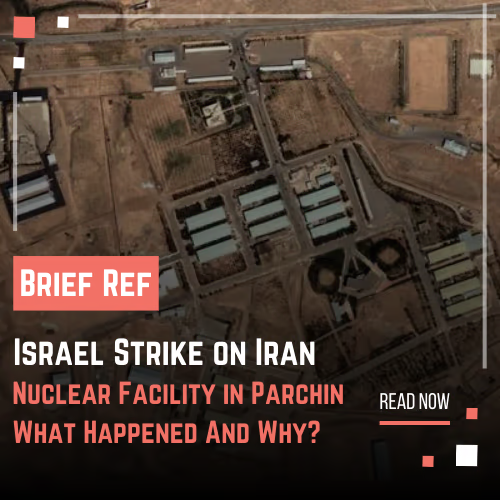What is the Israel strike on Iran nuclear facility?
In late October 2024, Israel launched a strike on Iran nuclear facility targeting the Taleghan 2 facility at the Parchin military complex, located about 20 miles southeast of Tehran. This facility was reportedly engaged in top-secret nuclear weapons research, according to U.S. and Israeli officials. The attack destroyed critical equipment essential for designing explosives used in nuclear devices. High-resolution satellite imagery confirmed that the facility was completely obliterated.
Iran, however, denied any active pursuit of nuclear weapons, maintaining its stance of using nuclear technology for peaceful purposes.
When did the attack happen?
Israel strike on Iran nuclear facility occurred on October 25, 2024, amidst heightened tensions between Israel and Iran following a series of provocative actions in the region.
Why did Israel target the Taleghan 2 facility?
The facility was allegedly part of Iran’s nuclear weapons program, which had been officially halted in 2003 but was recently suspected of resuming covert operations. Intelligence gathered earlier this year suggested that the site was used for research activities like metallurgy, computer modeling, and explosive tests that could aid in nuclear weapon development.
Israel viewed these activities as a direct threat, given Iran potential violation of the Nuclear Non-Proliferation Treaty (NPT). The strike also served as a strategic message that Israel has deep insight into Iran highly secretive operations.
Where did the strike occur?
The attack took place at the Parchin military complex, specifically targeting the Taleghan 2 site, located southeast of Tehran. Parchin is historically significant as it has been associated with Iran previous nuclear research efforts.
Who was involved in the strike?
The operation was led by the Israeli Air Force (IAF) with support from intelligence collaboration between the United States and Israel. Key figures in the Israeli government, including Defense Minister Israel Katz and Prime Minister Benjamin Netanyahu, were involved in decision-making. The strike also came amidst U.S. concerns, as President Joe Biden had previously urged Israel to avoid escalating tensions with Iran.
What are the impacts of this event?
- Damage to Iran Nuclear Program: The destruction of sophisticated equipment has significantly slowed Iran’s progress in nuclear weapon development.
- Increased Tensions: The strike has heightened the already volatile relationship between Israel and Iran, with potential ripple effects on the broader Middle East.
- International Oversight: The International Atomic Energy Agency (IAEA) is expected to discuss this development in its upcoming board meeting, possibly leading to censure resolutions against Iran.
- Strategic Implications: Israel’s actions highlight its commitment to thwarting any existential threats, reinforcing its stance against nuclear proliferation in the region, Parchin complex.
What’s next for Iran and the international community?
- Iran’s Response: Iran may retaliate against Israel or further limit its cooperation with the IAEA, as hinted by its Foreign Minister Abbas Araghchi.
- IAEA Meeting: The IAEA board of governors will deliberate on Iran’s lack of transparency and consider new resolutions.
- Diplomatic Talks: While Iran has expressed willingness to negotiate with European powers (France, Germany, and the UK), it remains resistant to external pressure.
- Israel Vigilance: Israeli officials have indicated that further strikes could occur if Iran resumes covert nuclear activities.
What Happened in Tehran?
In the early hours of Saturday (around 02:15 local time), explosions rocked Tehran and its surrounding areas. Verified footage shared on social media showed projectiles lighting up the sky, while residents reported hearing loud blasts. The strikes, conducted by the Israel Defense Forces (IDF), spanned over three hours and involved multiple waves of attacks using aircraft, including drones and jets.
The operation targeted Iranian military infrastructure, including air defenses, missile and drone production facilities, and launch sites. Satellite imagery analysis confirmed significant damage to buildings in the Parchin military complex, a key site for Iran’s defense operations, potentially undermining its ability to mass-produce missiles.
Israeli Prime Minister Benjamin Netanyahu, monitoring the strikes from the IDF’s command center in Tel Aviv, emphasized that the operation delivered a strong blow to Iran’s defense and missile production capabilities. “Whoever harms us, we will harm them,” Netanyahu declared.
Why Did Israel Strike Iran?
Israel’s actions were a direct response to escalating aggression from Iran. Since April, Iran has launched multiple missile and drone attacks, including a significant strike on October 1 that involved 180 ballistic missiles aimed at Israel. These actions were framed as retaliation for the deaths of Iranian and allied leaders in previous Israeli operations.
Iran is a key supporter of militant groups like Hamas and Hezbollah, which are hostile to Israel. By targeting Iran’s military assets, Israel aimed to curb its capacity to fuel regional conflicts and protect its national security Parchin complex.
Where Did the Strikes Occur?
The attacks hit key locations across Iran, including:
- Tehran: Multiple defense ministry and air defense sites were targeted.
- Khuzestan and Ilam Provinces: Additional military sites faced heavy strikes.
BBC Verify identified damage to a defense ministry base east of Tehran and an air defense site to the south.
How Did Iran Respond?
Iran downplayed the impact of the strikes, claiming that most missiles were intercepted and only minimal damage was inflicted. However, Iranian Supreme Leader Ayatollah Ali Khamenei acknowledged the attacks, urging authorities to balance their response with national interests.
The Iranian Revolutionary Guard Corps (IRGC) imposed strict censorship, making it illegal to share images or news about the attack with outlets perceived as hostile, including Western media.
What Are the International Reactions?
- United States: The White House described Israel’s strikes as a defensive measure, lauding the operation’s focus on military targets while avoiding civilian infrastructure.
- United Kingdom: UK Prime Minister Keir Starmer supported Israel’s right to self-defense but called for restraint on all sides to prevent further escalation.
- Saudi Arabia and Egypt: Both nations expressed concerns over the regional security implications, urging de-escalation.
- Hamas: The group condemned the strikes as a violation of Iranian sovereignty and a threat to regional stability.
What’s Next?
The IDF announced that its primary focus remains the conflicts in Gaza and Lebanon. While Israel dismissed claims of prior warnings to Iran, the strikes were calibrated to avoid triggering a broader war. Meanwhile, Iran stated it has the right to defend itself under international law but also expressed an interest in maintaining regional stability.
The situation remains tense, with both nations wary of further escalation while international players push for diplomacy.




